What is a Receptacle Outlet?(Learn Types & Uses)
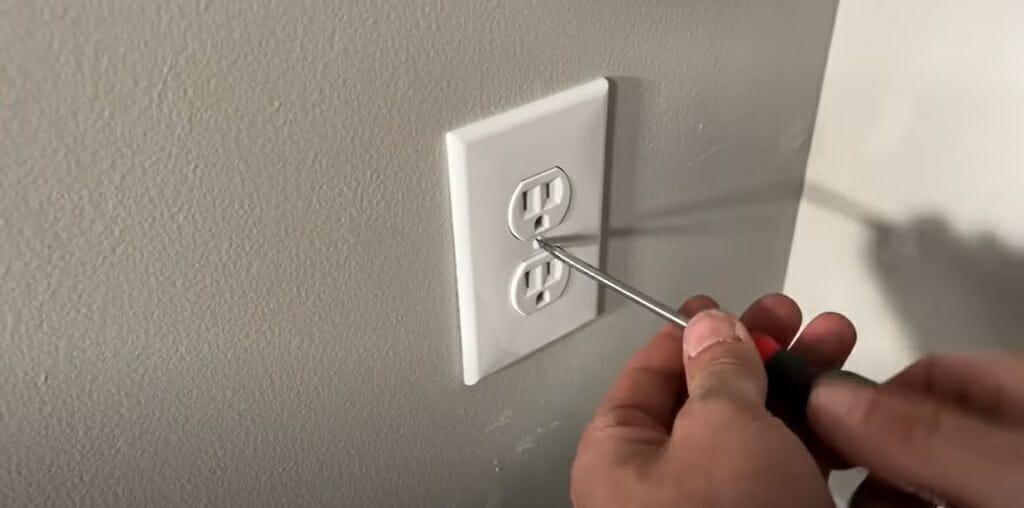
Hey everyone! Are you curious about the unsung heroes of our homes who keep our gadgets charged and our appliances humming? Let me take you through the electrifying world of receptacle outlets.
A receptacle outlet distributes electricity to your appliances and circuits. The receptacle type might vary depending on the appliances’ power requirements.
Stick around as we dive deep into what makes these outlets tick, the different types you might encounter, and why knowing your way around them can be empowering and essential for keeping your home running smoothly. Let’s get charged up and ready to explore!
List of The Most Common Receptacle Outlets
Let’s roll up our sleeves and jump into the heart of the matter – the most common receptacle outlets you’ll find zipping electricity around your home.
These outlets are key to maximizing your home’s electrical system.

Standard Duplex Receptacle (15-amp, 125-volt): This is the most widely used receptacle in residential and commercial settings. It has two slots, one for the hot and one for the neutral wire, and can handle a maximum current of 15 amps.

GFCI (Ground Fault Circuit Interrupter) Receptacle: These outlets are designed for safety in wet or damp locations, such as bathrooms, kitchens, and outdoor areas. They have built-in protection against ground faults, which can cause electric shock, by automatically tripping and cutting off the power supply when a ground fault is detected.

20-amp, 125-volt Receptacle: These outlets are used for higher-power appliances and devices that require a higher current capacity. They can be identified by a horizontal slot on the left side in addition to the two standard slots.
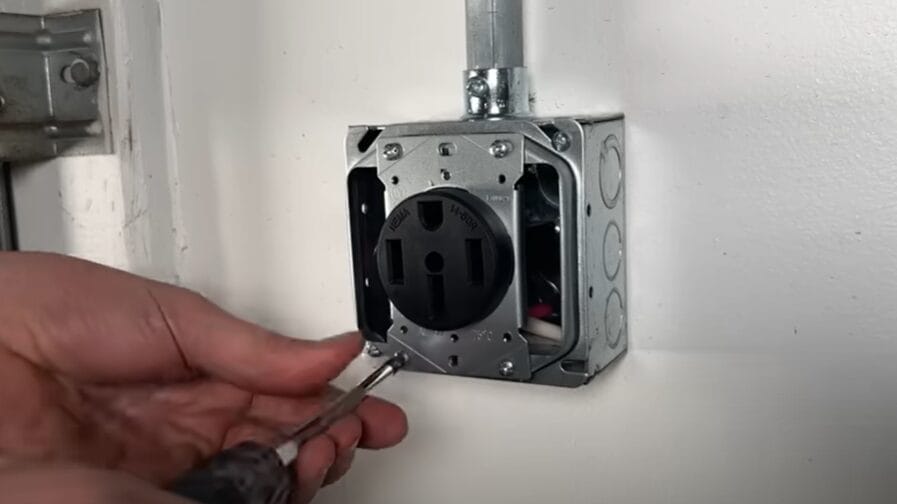
240V Outlet Receptable: These outlets are used for large appliances that require a higher voltage, such as electric stoves, dryers, and air conditioners. They come in various configurations, the most common types being 30-amp and 50-amp receptacles.
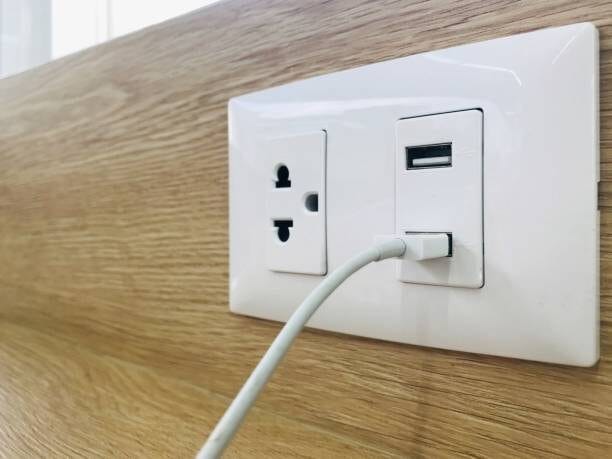
USB Receptacle: These outlets have built-in USB ports, in addition to standard slots, for charging electronic devices such as smartphones, tablets, and e-readers without needing a separate adapter.
Depending on the power requirement, you’ll have to use different types of outlets for different appliances. Here is a simple table with details about the most common outlet types.
| Outlet Type | Wire Size | Breaker Size | Use |
| 15A 125A | 2c 14 AWG | 15A 1P | All |
| 15/20A 125A | 2c 12 AWG | 20A 1P | Kitchen, Basement |
| 30A 125/250A | 3c 10 AWG | 30A 2P | Electric dryers |
| 50A 125/250A | 3c 18 AWG | 40A 2P | Electric range outlet |
| 15A 250A | 2c 14 AWG | 15A 2P | Large Pressure washer |
| 20A 125A | 2c 12 AWG | 20A 2P | Air compressors (large) |
| 30A 125A | 2c 12 AWG | 30A 2P | Arc Welders |
Things You Should Know About Receptacle Outlets
Diving into the world of receptacle outlets, there’s much more than meets the eye.
From the ins and outs of voltage and amperage to the why and how of staying safe with your outlets, we’re covering the must-know details that keep your home buzzing along safely and efficiently.
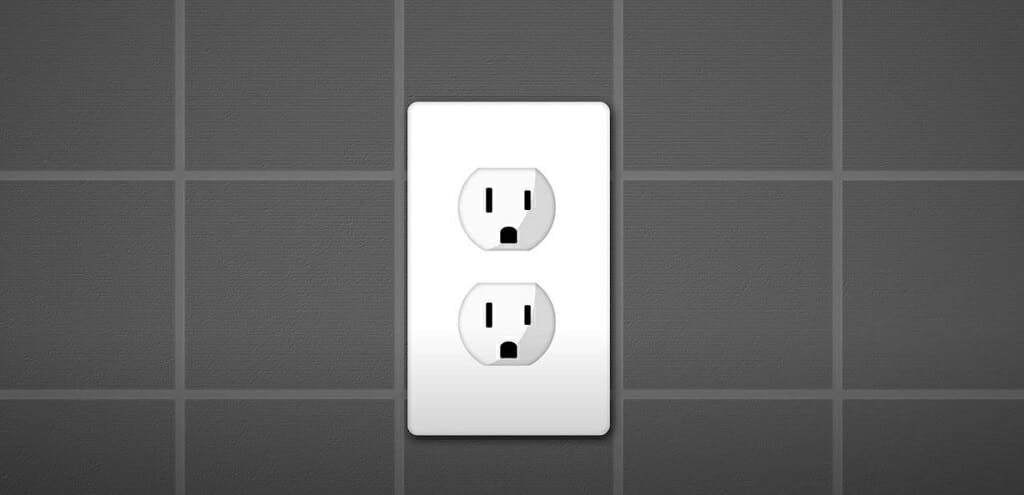
- Voltage and Amperage: Receptacle outlets come in different voltage and amperage ratings. Common household receptacles are rated at 15 or 20 amps with a voltage of 125 volts. Heavy-duty appliances require 240-volt receptacles with higher amperage ratings.
- Safety Features: Modern receptacle outlets include various safety features such as Ground Fault Circuit Interrupters (GFCI) for wet locations, Arc Fault Circuit Interrupters (AFCI) to prevent electrical fires, and tamper-resistant outlets to protect children from accidental shocks.
- Polarization and Grounding: Most receptacles are polarized, with one slot wider than the other, to ensure that the hot and neutral wires are connected correctly. Many outlets also include a third ground slot for added safety.
- Outlet Spacing and Placement: The National Electrical Code (NEC) has guidelines for the spacing and placement of receptacle outlets to ensure convenience and minimize the use of extension cords. Generally, receptacles should be placed no more than 12 feet apart along walls and every 6 feet in kitchens and bathrooms.
- Proper Installation and Wiring: To avoid potential hazards and ensure compliance with electrical codes, a qualified electrician should install and wire receptacle outlets. This includes choosing the right type of outlet for the specific location and purpose, using appropriate wire sizes, and adhering to proper grounding practices.
- Maintenance and Testing: Regularly inspect your receptacle outlets for any wear or damage, such as loose connections, broken faceplates, or discoloration from overheating. Test GFCI and AFCI outlets periodically to ensure they function correctly and provide the intended protection.
- Outlet Capacity: Avoid overloading outlets by plugging in too many devices or using multiple power strips. Overloaded outlets can cause electrical fires or damage to your appliances and devices.
- Extension Cords and Power Strips: Use extension cords and power strips cautiously and temporarily, as they can create potential hazards if not used properly. Always choose the right type of extension cord for your needs, and avoid using them as a permanent solution.
- Weather-resistant and Outdoor Receptacles: For outdoor use, receptacle outlets should be weather-resistant and have a cover to protect them from moisture, dust, and other elements. Ensure they are also GFCI-protected to prevent electrical shocks.
- Adapters and Outlet Converters: If you need to plug a device with a different plug type into a receptacle, use a proper adapter or outlet converter. However, avoid using them for long periods, as they can create potential hazards or damage your devices.
Understanding receptacle outlets can be useful in many situations. For instance, you must know about the outlet and its mechanism to carry out simple outlet repairs.
Hot, Neutral, and Ground Slots
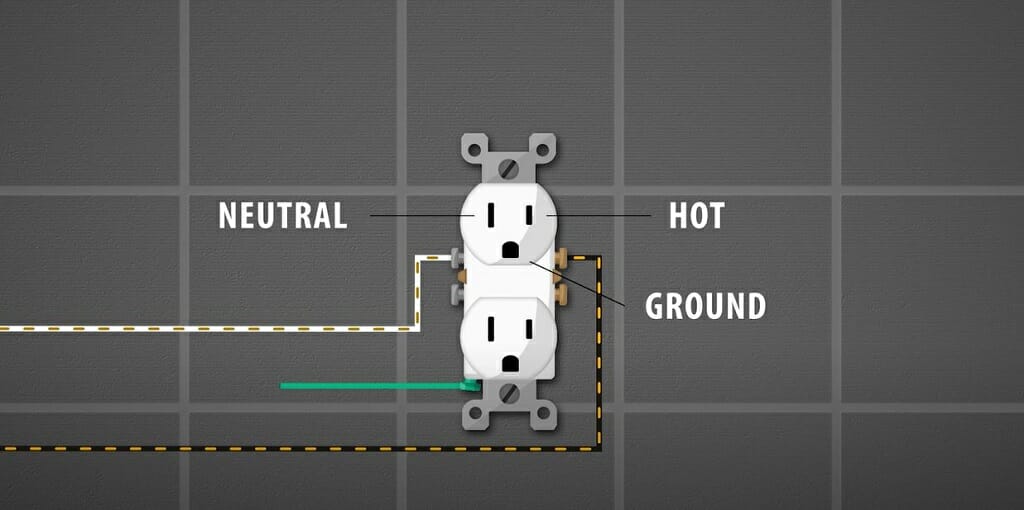
A receptacle outlet has three different slots. Understanding these three slots will help you in many ways.
Examine the above image. There, you can see three different slots.
The hot wire connection is the smaller slot at the right side of the outlet. The hot wire from the distribution panel connects to that terminal. The slot then gets energized and sends power to the particular appliance.
The large slot located on the left side is the neutral wire connection. Finally, the bottom slot represents the ground wire connection.
Troubleshooting Tips and Common Problems with Receptacle Outlets
I will show you how to tackle common glitches like a pro, keeping your home safe and your power flowing smoothly. Let’s light it up and get those outlets in tip-top shape!
| Common Outlet Problem | Troubleshooting Tip |
|---|---|
| GFCI Outlet Keeps Tripping | First, make sure there’s no moisture involved. These guys are super sensitive to water. If it’s dry, unplug all devices and reset. If it trips with nothing plugged in, you might have a faulty GFCI or an issue with the wiring. It’s time to call in the pros! |
| No Power to Outlet | Check if other outlets are working; this could be a breaker issue. If it’s just one, try resetting any nearby GFCI outlets—sometimes, they’re connected. Still no luck? It might be time to switch it out for a new one or check for loose wires. Safety first, though—turn off the power at the breaker before you poke around! |
| Outlet Feels Warm or Hot to the Touch | Warm outlets aren’t throwing a party; they tell you something’s up. This can be a sign of an overloaded circuit or a loose connection. Unplug everything and give it a rest. If it stays hot, don’t use it until you get an electrician to take a look. It’s better to be safe than sorry with electrical issues. |
| Plugs Fall Out of the Outlet | Loose connections can turn your outlet into a non-grippy slide for plugs. It’s often a sign of worn-out contacts inside the outlet. Replacing the outlet is usually the best fix. Remember, a secure connection is key to safety and efficiency. |
| Buzzing or Humming Noise From Outlet | This soundtrack isn’t just annoying; it’s a red flag. It usually indicates a problem with the wiring or the outlet itself. Please don’t use it and call in an electrician to check it out. Electrical issues can escalate quickly, so don’t ignore the buzz. |
| Sparks When Plugging In a Device | A spark can be normal if it’s quick and doesn’t happen often. But if it’s a big spark, or you see it frequently, it might mean an issue with your outlet or the device you’re plugging in. It’s best to get it checked by a professional to avoid fire hazards. It’s always better to play it safe! |
| Outlet Has Burn Marks or Smells Like Burning | This is a major red flag. Burn marks or a burning smell indicate a serious electrical problem. Do not use the outlet; immediately turn off the power in that area in your breaker box. This situation calls for a professional electrician, stat. Don’t be the hero here; electrical fires are no joke. |
Remember, while DIY can be fun and rewarding, electrical work is serious business. If you’re ever in doubt or the problem seems bigger than a simple reset, don’t hesitate to call in a professional electrician. Stay safe, and let’s keep those outlets working like champs!
Frequently Asked Questions
- What’s the Lifespan of Different Outlets?
- Every outlet has its timer ticking away, but on average, you’re looking at about 15 to 25 years of faithful service. Of course, this can vary based on usage and the quality of the outlet. Watch for signs of wear and tear to know when it’s time for a change.
- Do I Need GFCI Outlets in All Bathrooms?
- Absolutely, yes! Bathrooms and water can be a risky combo when it comes to electricity. GFCI outlets are your best bet to avoid shocks, as they automatically cut off the power if a fault is detected. It’s not just a good idea; it’s a safety must-have.
- How Can I Convert a Standard Outlet to a USB Outlet?
- Joining the modern world with a USB outlet is easier than you think. You’ll need a new USB outlet from your local hardware store and a few tools. Always remember to turn off the power at the breaker before you start swapping. If you’re unsure, getting a pro to do the swap is a bright idea.
- Is It Safe to Use Extension Cords permanently?
- Extension cords are great for temporary solutions, but using them permanently can lead to risks like tripping hazards, overheating, and even fire. For long-term needs, consider adding more permanent outlets to your space.
- Can I Plug Any Appliance Into a 240-volt Outlet?
- Appliances designed for 240 volts need those outlets, but plugging in a standard 120-volt appliance could lead to a bad day. Always check your appliance’s voltage requirements before you plug it in to avoid damage or danger.
- How Often Should I Test My GFCI Outlets?
- Testing your GFCI outlets monthly is a good way to get into a good rhythm. It’s easy—press the test button, and the outlet should shut off. Hit reset, and you’re back in business. This quick check can make all the difference in keeping your home safe.
- What’s the Deal With Tamper-Resistant Outlets?
- These clever outlets have built-in shutters that prevent foreign objects from being inserted, making them a smart choice for homes with curious little explorers. They offer extra safety for your family without compromising on convenience.
Resources
Organizations
- National Electrical Manufacturers Association (NEMA) – https://www.nema.org/
- Electrical Safety Foundation International (ESFI) – https://www.esfi.org/
- Underwriters Laboratories (UL) – https://www.ul.com/solutions
Books
- “Wiring a House” by Rex Cauldwell – https://books.google.com/books/about/Wiring_a_House.html?id=anbv0BWVfeQC
- “The Complete Guide to Wiring” (Current with Electrical Codes) by Black & Decker – https://books.google.com/books/about/Black_Decker_The_Complete_Guide_to_Wirin.html?id=c95HDwAAQBAJ
- “Electrical Wiring Residential” by Ray C. Mullin and Phil Simmons – https://books.google.com/books/about/Electrical_Wiring_Residential.html?id=vu_FDwAAQBAJ
Website Resources
- This Old House – https://www.thisoldhouse.com/
- The Spruce – https://www.thespruce.com/
Video References
Everyday Home Repairs
AMRE Supply
Everyday Home Repairs
Everyday Home Repairs
